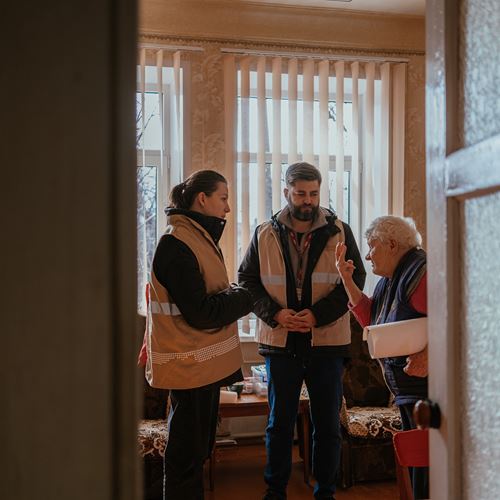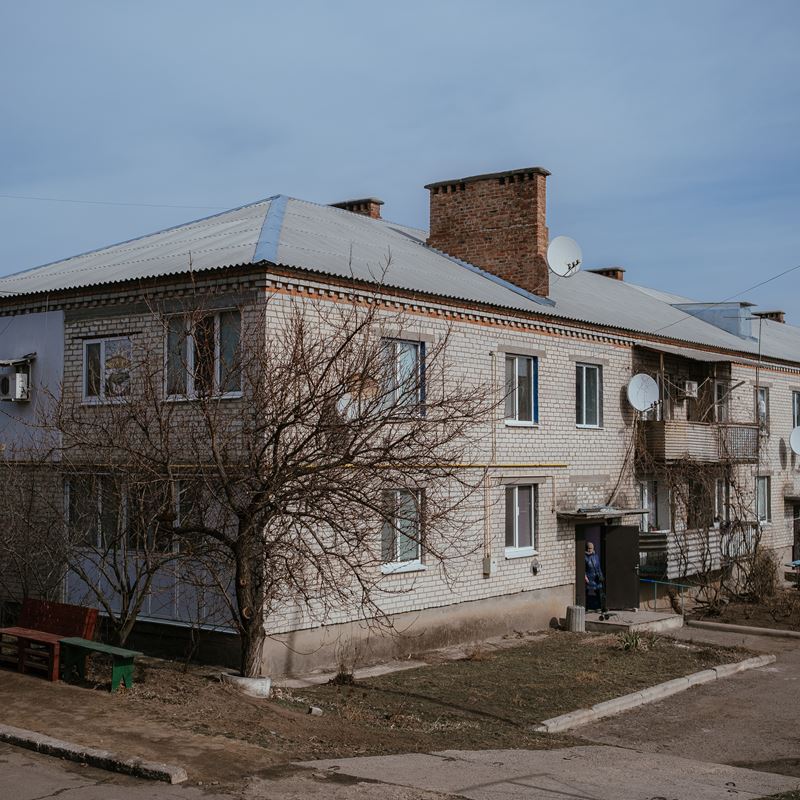
In Sloviansk, just 25 kilometres from the front line, 72-year-old Oksana* sits by her freshly installed window, basking in the sunlight that now fills her small apartment. A retired artist, she still sees the world in colours and lines—even though she hasn't held a paintbrush in years.
“I dream of painting again,” she says, her voice soft but steady. “One day, I’ll make portraits of my grandchildren.”
Before the war, Oksana lived a quiet life. But in the early weeks of the full-scale invasion, a sudden explosion jolted her from sleep.
“I didn’t even have time to be afraid,” she recalls. “The blast shattered the windows. I was covered by a thick camel blanket—that’s probably what saved me from the flying glass. Then the power went out, and I could smell gas. I knew I couldn’t light a match.”
That night marked the beginning of months of hardship. Her own home was damaged, as were her daughter’s apartment and her son-in-law’s office. Offers to evacuate came, but she refused. “I couldn't leave,” she says simply. “This is my home.”
Without windows and no heating, her apartment quickly became unbearably cold. Her son did what he could—covering the broken panes with plastic sheeting—but it was not enough to keep the bitter chill out. On her limited pension, replacing the windows was impossible.
Doors of opportunity open up
That’s when Oksana turned to the Danish Refugee Council (DRC) for help. Her apartment wasn’t listed in the State Register of Property Rights, which meant she couldn’t apply for state repair programmes. But with support from USAID’s Bureau for Humanitarian Assistance, DRC was able to step in.
“We assessed the damage and registered her for assistance,” explains Anton, a Shelter and Settlement Assistant at DRC. “A contractor was hired, and the work was completed within a day.”For Oksana, the repairs made a real difference. “It’s much warmer now, and I don’t have to worry about drafts or rain coming in,” she says. “I’m just grateful to feel safe and comfortable again in my home.”





